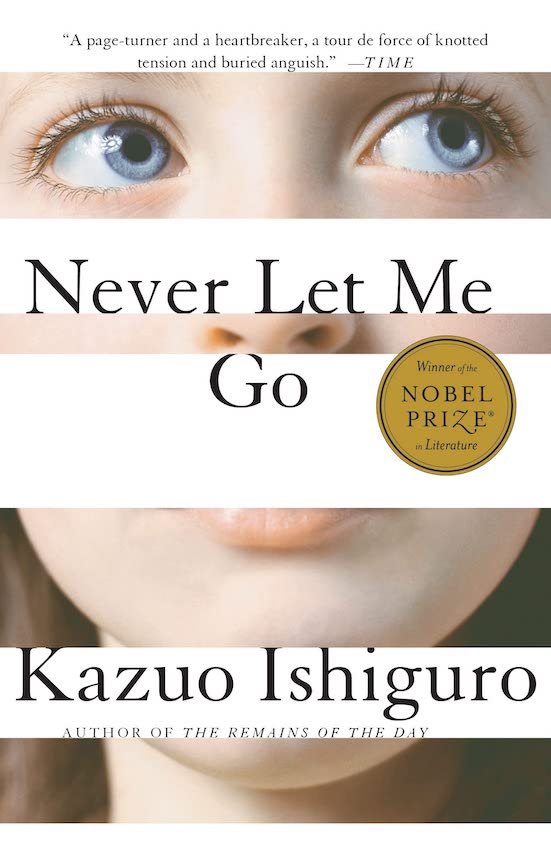Book Of The Month: Klara And The Sun
This page may contain affiliate links. As an Amazon and Rewardstyle affiliate, we may earn a small commission for any purchases made through these links. Click here for the disclosure statement.
A highly experimental and probing work of science fiction, Klara And The Sun explores an interpretation of human nature and experience through a non-human perspective.
Renowned author and 2017 winner of the Nobel Prize in Literature, Kazuo Ishiguro, presents a intellectually-compelling novel from a unique point of view: that of a solar-powered humanoid robot named Klara that was designed and manufactured to be an AF (Artificial Friend), a child's companion. Because our protagonist is a robot, her outside perspective on the human race provides a point of view that couldn’t be found from any human protagonist.
Klara and the Sun
Originally Published: 2021
Pages: 320
Available on: Kindle, Paperback, Hardcover, Audiobook
GET YOUR COPY HERE
Try a free trial of Audible Plus here!
In Klara and the Sun, Ishiguro examines humanity’s profound fear of loneliness; he examines the dangerous nature and potential limitations of scientific progress and technology; and he examines the nature of love and the heart.
Gifted with exceptional intelligence and capabilities, the AF Klara examines the human race impartially and non-judgmentally, learning and experiencing herself the fears and insecurities that every person seems to hold inside. Even though she is a robot, Klara displays more grace, forgiveness, and selflessness of any other character in the story. The irony of this storyline is that a robot is exemplifying more heart and soul than any human; the people, in turn, are messy, selfish, and faulty in their small ways.
““They fought as though the most important thing was to damage each other as much as possible.””
Set in a vaguely futuristic society, the novel begins with Klara sitting in a shop, waiting and wishing for selection, so that she may fulfill her purpose as a companion to an adolescent. One day, a captivating girl named Josie and her mother wander by, and Klara and Josie immediately bond. Klara moves easily into her role as Josie’s chosen AF and quickly gains both the reader’s and her new family’s trust.
As Klara adapts to Josie’s lifestyle, she meets her teenage friends, comes to an understanding with her reluctant mother, and takes care of Josie when she is sick. All the while, Klara remains a passive, observant figure who displays nothing but curiosity and the willingness to understand what motivates humans to act as they do. She takes mental notes in order to be the best possible companion to Josie, but her observations are full of interesting insights about human behavior, desires, and intention.
““Of course, a human heart is bound to be complex. But it must be limited.” ”
Very often, Klara is stumped and puzzled by the complex negativity displayed by the people around her: Why did one person use such harsh words against another? Why is it that two people who used to be so close and share so much love in the past, now either despise each other or have no relationship with them whatsoever? Klara’s unbiased wondering and pure reactions spark the same questions in readers’ minds.
Josie, suffering from a relatively mysterious illness, is often sick. Josie’s parents lost their eldest daughter to this same sickness and, motivated by the pain of that past loss, are in the works of a plan that is to be executed if Josie should pass away.
Without giving too much away, the plan revolves around Josie’s mother’s belief that it would be possible to keep a part of Josie alive. A desperate fear of loss and loneliness makes her mother willing to make a morally-dubious choice in order to maintain Josie’s presence. As this idea is brought to light, Klara wonders about her own involvement in this plan (but we are not here to give anything away!).
““I think I hate Capaldi because deep down I suspect he may be right. That what he claims is true. That science has now proved beyond doubt there’s nothing so unique about my daughter, nothing there our modern tools can’t excavate, copy, transfer. That people have been living with one another all this time, centuries, loving and hating each other, and all on a mistaken premise. A kind of superstition we kept going while we didn’t know better.” ”
As the novel unfolds, the question becomes more and more clear: Can a human be replaced? What actually is there to love inside a human? What lengths do we as people go in order to avoid loneliness? What price are we irrationally willing to pay to keep love?
““What was becoming clear to me was the extent to which humans, in their wish to escape loneliness, made maneuvers that were very complex and hard to fathom.”
Time and again, Klara encounters a deeply-seated fear of loneliness in her interactions with people. Seeing their constant fear-based actions and decisions, Klara concludes that their desire for love is at the base of everything that they do and say, no matter how contradictory, negative, or complicated their actions or words are.
““But then suppose you stepped into one of those rooms,’ he said, ‘and discovered another room within it. And inside that room, another room still. Rooms within rooms within rooms. Isn’t that how it might be, trying to learn Josie’s heart? No matter how long you wandered through those rooms, wouldn’t there always be others you’d not yet entered?” ”
The novel is a work of curiosity; we are following Klara’s eyeline as she discovers humans for the first time, her observations simple and somewhat-robotic, but painfully accurate. At the heart of the novel, Ishiguro prompts readers to wonder what really makes a human, and what individualizes each of us. Is there actually something within that is undefinable and unable to be reproduced? Klara And The Sun contextualizes our modern desire for automation and technology, for ease and comfort by way of machinery and computerization. But are we actually striving towards bettering and improving the human experience, or are we neglecting some crucial element in this pursuit?
““Mr. Capaldi believed there was nothing special inside Josie that couldn’t be continued. He told the Mother he’d searched and searched and found nothing like that. But I believe now he was searching in the wrong place. There was something very special, but it wasn’t inside Josie. It was inside those who loved her.””
Klara And The Sun is a novel that leaves much to be discussed and guessed by readers, not supplying all the nitty-gritty how-to’s in this futuristic setting. Although it is classified as science fiction, this novel is not typical of the genre, being more philosophical than technical. Any hopes of a true science fantasy will be disappointed, as Ishiguro himself stresses that genre rules should be “porous, if not nonexistent."
Ishiguro is renowned for several of his novels, including Remains Of The Day and Never Let Me Go. If you enjoy Klara And The Sun, any of his other novels would be a great choice!
More By Kazuo Ishiguro:
Image: Amazon
Image: Amazon







